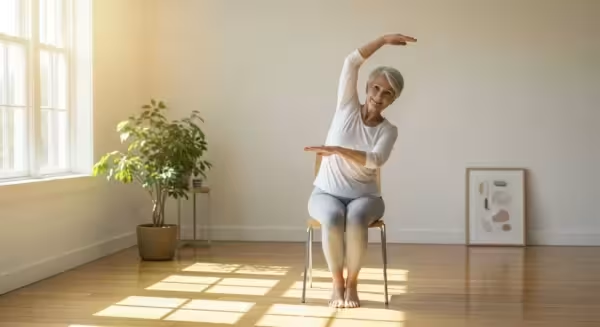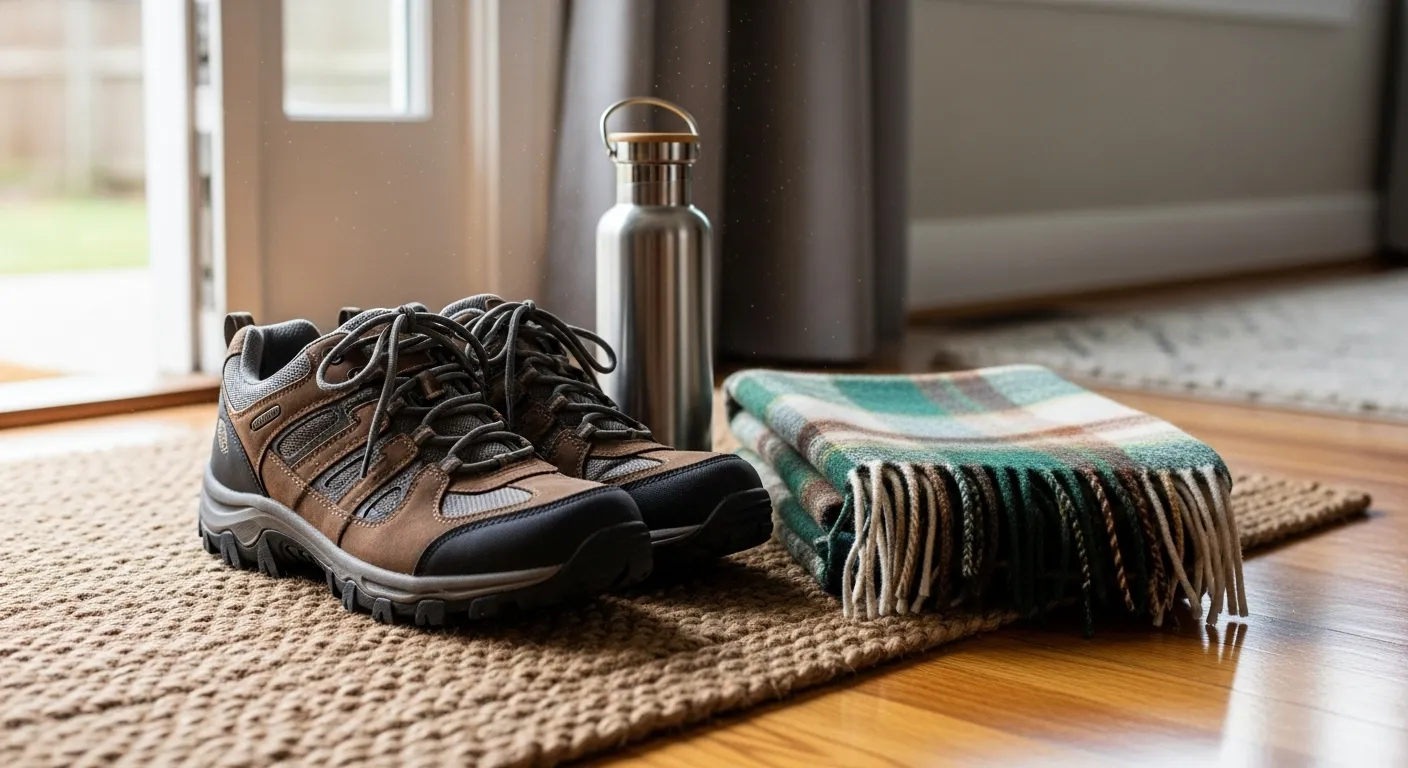
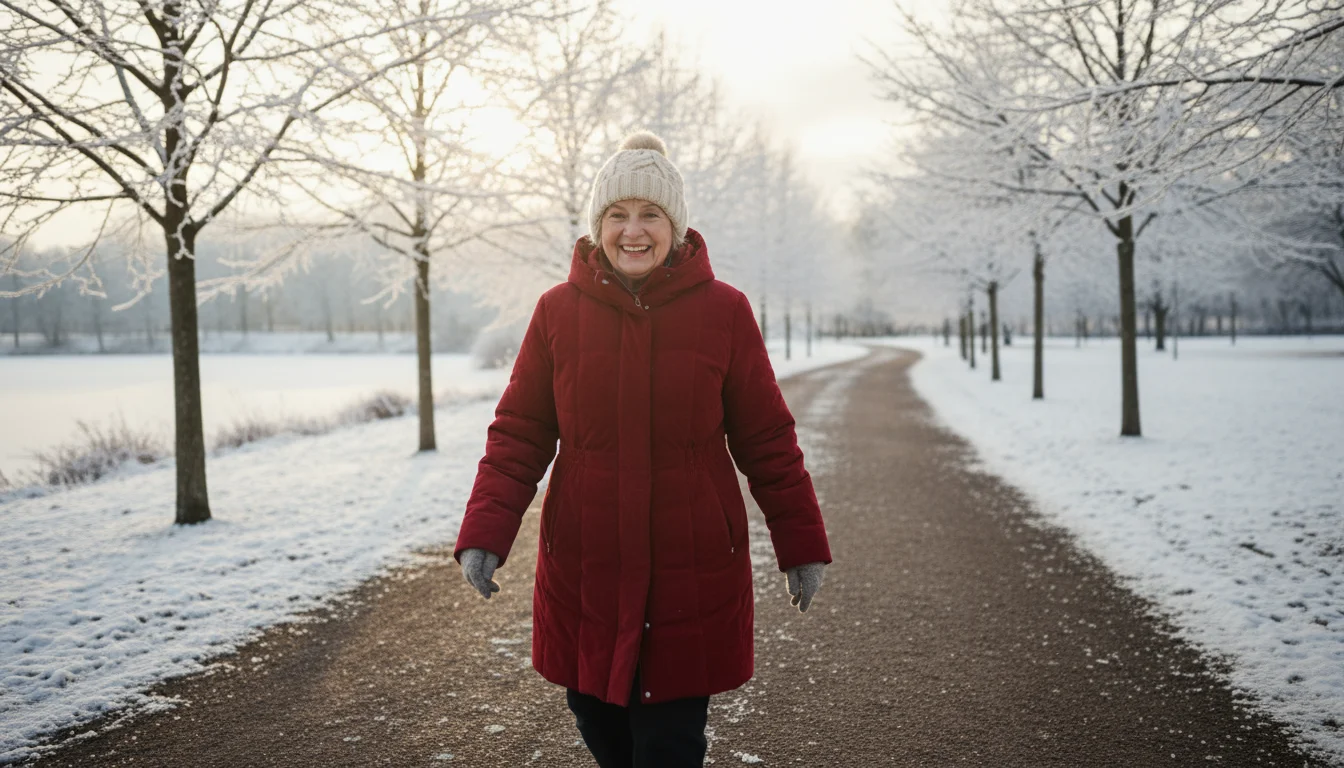
Introduction: Prioritizing Your Health with Winter Activity
As the days grow shorter and a chill settles in the air, the temptation to stay indoors with a warm blanket and a good book can be strong. While rest is important, the winter months can present unique challenges to staying physically active. For many seniors, concerns about slippery sidewalks, cold temperatures, and decreased motivation can lead to a more sedentary lifestyle. However, maintaining a consistent level of activity is one of the most powerful tools we have for preserving our health, independence, and overall quality of life.
Staying active during winter is not just about physical fitness; it is deeply connected to our mental and emotional well-being. Regular movement can help combat feelings of isolation and the “winter blues” that many experience during this time of year. This article is designed to be your guide to safe and effective senior winter fitness. We will explore gentle indoor exercises, provide essential cold-weather safety tips for those who enjoy the crisp winter air, and discuss how to listen to your body to prevent injuries. Our goal is to empower you with practical knowledge so you can embrace the season with confidence, knowing you are taking the best possible care of your health.

Understanding the Health Benefits (and Any Risks)
Embracing an active lifestyle during the winter offers a wealth of benefits that touch nearly every aspect of your health. Understanding these advantages can provide powerful motivation on days when the couch feels most inviting. At the same time, it is crucial to be aware of the potential risks associated with winter activity to ensure you are exercising safely and effectively.

The Many Benefits of Winter Activity
First and foremost, regular physical activity is a cornerstone of cardiovascular health. Gentle exercises like walking or stationary cycling help strengthen your heart muscle, improve circulation, and can assist in managing blood pressure and cholesterol levels. This is particularly important during winter, when our bodies may work harder to stay warm.
Maintaining muscle mass and bone density is another critical benefit. As we age, we naturally lose muscle and bone strength, which can increase the risk of falls and fractures. Weight-bearing exercises, even simple ones like standing and marching in place, help to slow this process. Furthermore, activities that challenge your balance, such as standing on one leg while holding onto a counter, can dramatically improve stability and reduce your fall risk—a primary concern on icy surfaces.
Joint health also sees significant improvement with regular movement. For individuals living with arthritis, the cold can often make joints feel stiff and sore. Gentle stretching and low-impact indoor workouts help lubricate the joints, reduce stiffness, and can alleviate pain. It might seem counterintuitive, but moving more is often the best medicine for joint discomfort.
Beyond the physical, the mental health benefits are profound. Exercise is a natural mood booster, triggering the release of endorphins, which have an effect similar to a pain reliever and mood elevator. This can be a powerful tool against Seasonal Affective Disorder (SAD), a type of depression related to changes in seasons. Staying active also provides a sense of routine and accomplishment, which helps combat feelings of lethargy and isolation that can creep in during the darker months.
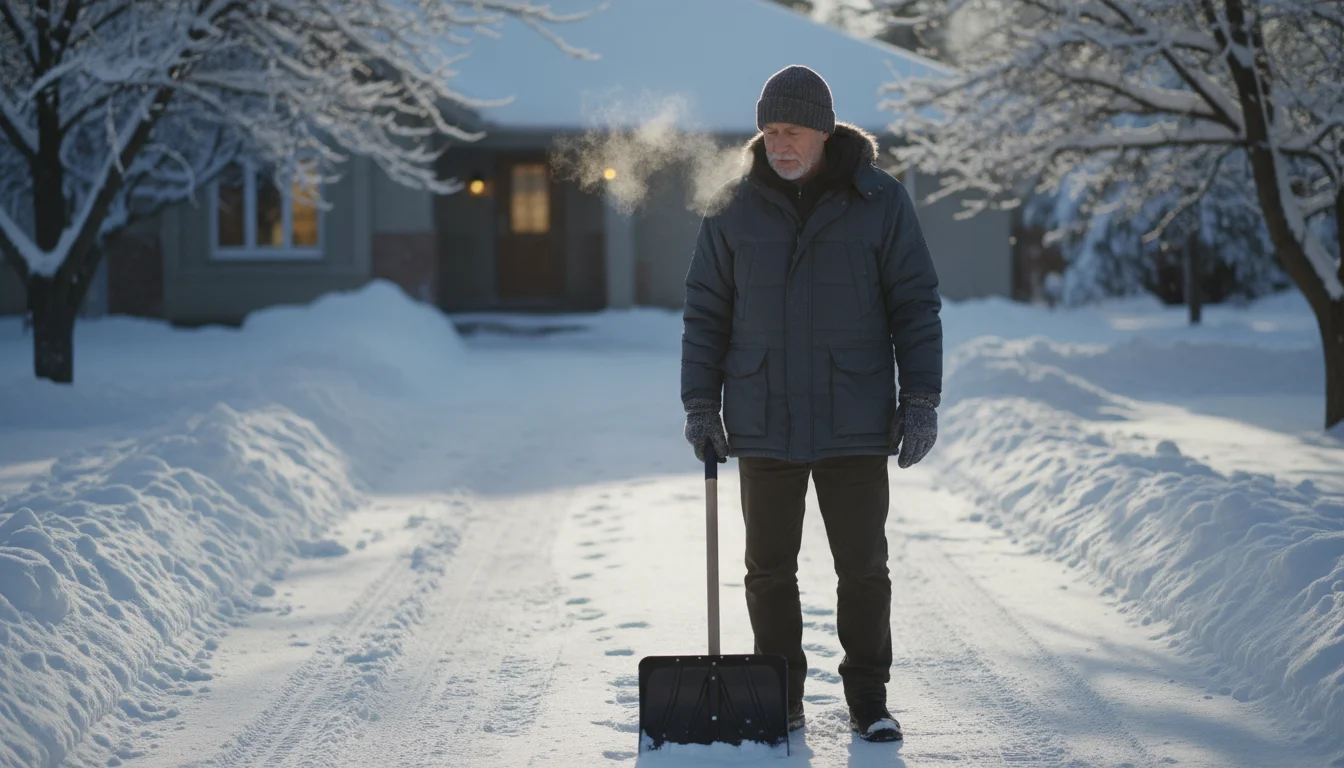
Recognizing the Potential Risks
While the benefits are clear, it is essential to approach winter activity with caution. The most obvious risk for outdoor exercise is falling on ice or snow. A fall can lead to serious injuries, including fractures of the hip, wrist, or spine. This is why proper footwear and careful path selection are non-negotiable.
Another significant risk of exercising outdoors in the cold is overexertion. Your heart already works harder in cold weather to pump blood throughout the body and maintain your core temperature. Strenuous activities like shoveling heavy snow can place a dangerous strain on the cardiovascular system, especially for those with pre-existing heart conditions.
Hypothermia and frostbite are also serious concerns. Hypothermia occurs when your body loses heat faster than it can produce it, causing a dangerously low body temperature. Frostbite is an injury caused by the freezing of the skin and underlying tissues. Both conditions can develop faster than you might think, making it vital to dress appropriately and limit your time outdoors in extreme cold.
For indoor exercise, the primary risks involve starting a new routine too aggressively. Doing too much, too soon, or using improper form can lead to muscle strains, sprains, or other overuse injuries. It is always best to start slowly, focus on gentle movements, and gradually increase the duration and intensity of your workouts. Authoritative health information for seniors is provided by the National Institute on Aging (NIA) and the Centers for Disease Control and Prevention (CDC).

A Step-by-Step Guide to Staying Active Safely
The key to a successful winter fitness plan is having a variety of safe and accessible options. This guide provides a range of ideas for both indoor and outdoor activities, with safety as the top priority. Remember to always begin any exercise session with a 5-minute warm-up, such as marching in place and gentle arm circles, to prepare your muscles and joints for movement.
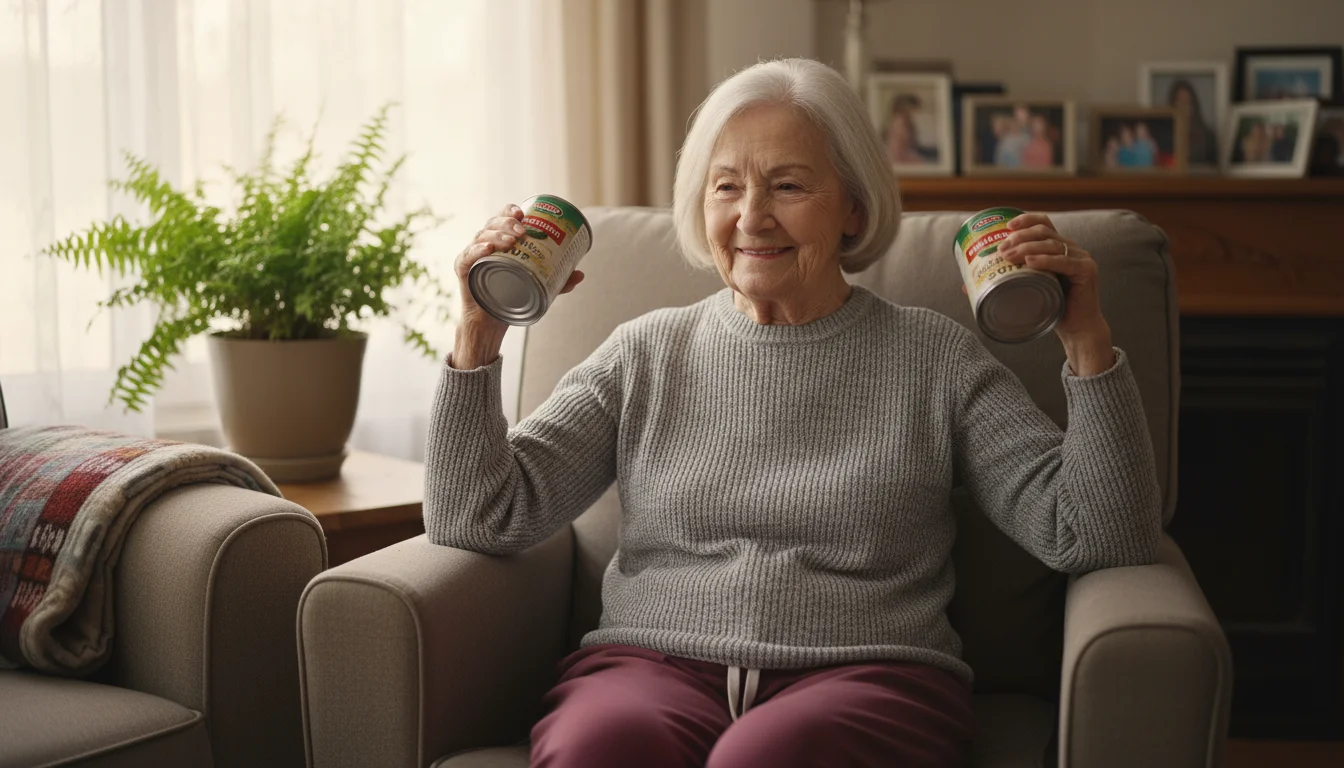
Safe and Effective Indoor Workouts
Your home can be transformed into a personal gym with no special equipment required. These indoor workouts focus on building strength, balance, and flexibility in a controlled, safe environment.
1. Chair-Based Exercises: A sturdy, armless chair is an excellent piece of fitness equipment. Sit tall with your feet flat on the floor.
- Seated Marching: While seated, lift one knee toward your chest, then the other. Alternate for 1-2 minutes to get your heart rate up gently.
- Leg Extensions: Extend one leg straight out in front of you, hold for a count of three, and then slowly lower it. Repeat 10 times on each leg to strengthen your quadriceps.
- Seated Bicep Curls: Holding a can of soup or a small water bottle in each hand, bend your elbows and lift the weight toward your shoulders. Lower slowly. Perform 10-12 repetitions.
- Gentle Torso Twists: Cross your arms over your chest and gently twist your upper body from side to side. This helps with spinal mobility.
2. Standing Exercises with Support: Use a kitchen counter, sturdy table, or the back of a chair for balance and support. Never use a chair with wheels.
- Wall Push-ups: Stand a little more than arm’s length from a clear wall. Place your palms on the wall, slightly wider than your shoulders. Slowly bend your elbows and lean your body toward the wall, then push back to the starting position. This is a great way to build upper body strength. Aim for 8-10 repetitions.
- Counter-Supported Leg Lifts: Holding onto a counter for balance, slowly lift one leg straight out to the side. Hold for a moment, then lower it with control. Repeat 10 times, then switch to the other leg. This strengthens the hip muscles, which are crucial for stability.
- Heel-to-Toe Walking: Practice walking in a straight line, placing the heel of one foot directly in front of the toes of the other. Do this alongside a wall or counter you can touch for support. This is a fantastic exercise for improving balance.
3. General Indoor Activities:
- Stretching: Incorporate gentle stretches into your daily routine. Stretch your calves, hamstrings, and shoulders while watching television or waiting for water to boil. Hold each stretch for 20-30 seconds and never bounce.
- Mall Walking: If you have a local indoor shopping mall, it can provide a safe, climate-controlled environment for walking. The floors are level, and there are places to rest if needed.
- Dancing: Put on your favorite music and simply move. Dancing is a joyful activity that improves cardiovascular health, coordination, and mood all at once.
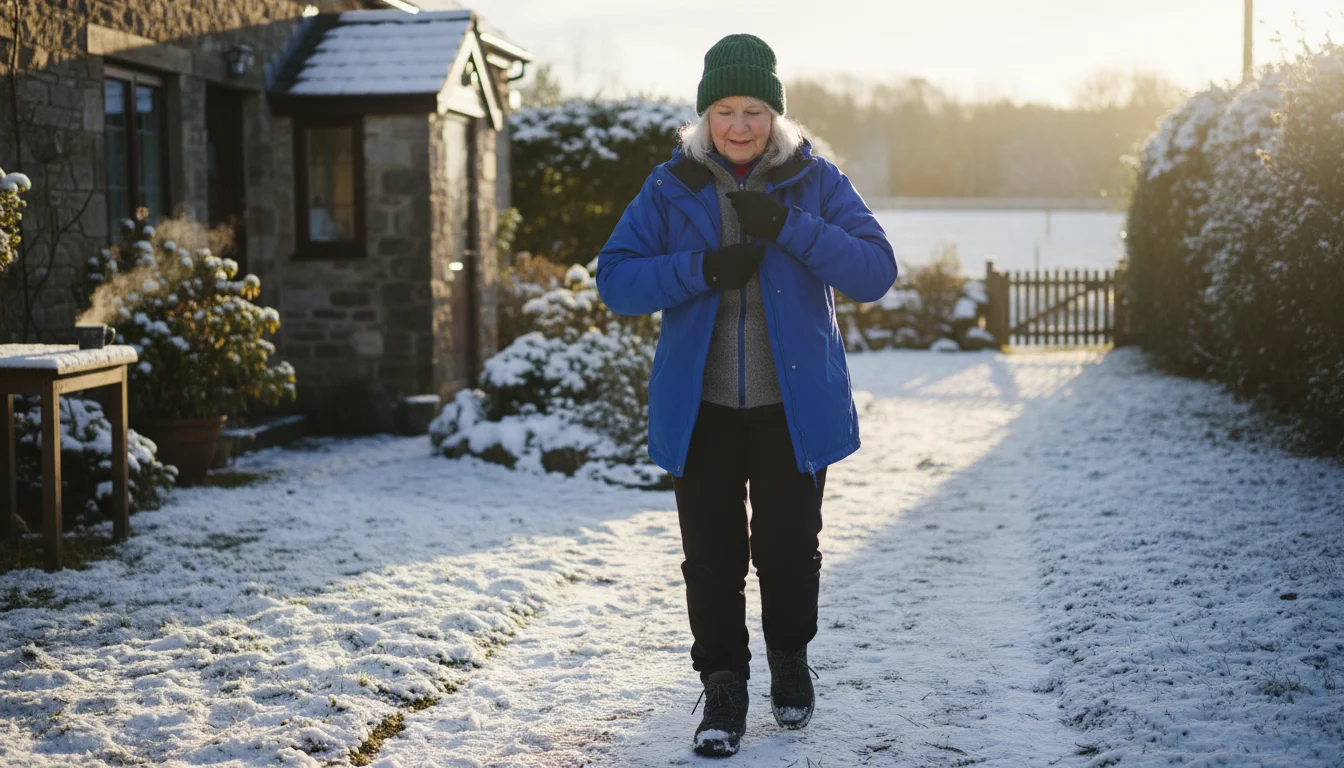
Enjoying the Outdoors with Smart Cold-Weather Tips
If you enjoy the fresh winter air, a brisk walk can be wonderful for both body and soul. Following these cold-weather tips is essential for your safety and comfort.
1. Dress in Layers: This is the most important rule. Layers trap air, which acts as an insulator, and allow you to adjust your clothing if you get too warm.
- Base Layer: The layer against your skin should be made of a moisture-wicking material (like synthetic fabrics or merino wool), not cotton. Cotton holds sweat, which can make you feel cold and damp.
- Middle Layer: This is your insulating layer. A fleece jacket or wool sweater works well.
- Outer Layer: This should be a windproof and waterproof jacket to protect you from the elements.
2. Protect Your Extremities: Your head, hands, and feet are most susceptible to cold. Always wear a warm hat, insulated gloves or mittens, and warm, non-cotton socks. A scarf or neck gaiter can be pulled up to protect your face and warm the air you breathe in.
3. Choose Proper Footwear: Wear waterproof boots with deep treads for good traction. For extra security on potentially icy days, consider purchasing a pair of ice grippers or cleats that can be stretched over your existing boots.
4. Pick Your Time and Path Wisely: Aim to walk during the warmest, brightest part of the day, typically mid-afternoon. Stick to paths that have been cleared of snow and salted. Be extra vigilant and scan the ground ahead of you for black ice, which can be nearly invisible.
5. Stay Hydrated: It’s easy to forget to drink water when it’s cold, but you still lose fluids through breathing and perspiration. Drink a glass of water before you go out and after you return.

Key Signs It’s Time to Consult a Doctor
Your health and safety are paramount. While physical activity is highly recommended, it is crucial to listen to your body and seek professional medical advice when necessary. This section outlines key situations where consulting your physician or another qualified health provider is not just recommended, but essential.
Before Starting a New Fitness Routine: If you have been inactive for a while or if you have a chronic health condition such as heart disease, diabetes, high blood pressure, or arthritis, it is vital to speak with your doctor before beginning any new exercise program. They can provide personalized recommendations and advise you on any activities you should modify or avoid based on your specific health needs.
During or After Exercise, Watch for These Red Flags:
- Chest Pain or Pressure: Any discomfort, pain, pressure, squeezing, or fullness in your chest, neck, jaw, or arms during or after activity could be a sign of a serious heart issue. Stop what you are doing immediately and seek emergency medical attention.
- Unusual Shortness of Breath: It is normal to breathe a bit heavier during exercise. However, if you experience extreme shortness of breath, gasping, or wheezing that does not improve with rest, you should contact your doctor.
- Dizziness, Lightheadedness, or Fainting: Feeling dizzy or as though you might faint is a sign that you should stop exercising immediately. If the feeling persists, it warrants a call to your healthcare provider.
- Sharp or Persistent Pain: The old saying “no pain, no gain” is not good advice. While mild muscle soreness is normal, sharp, stabbing, or persistent pain in a muscle or joint is a signal from your body that something is wrong. Stop the activity and consult a doctor or physical therapist if the pain does not go away.
- Unexplained Swelling: If you notice new or unusual swelling in your ankles, feet, or legs, it could indicate a circulatory or cardiac issue and should be evaluated by a doctor.
If You Experience a Fall: Even if you feel fine after a fall, it is always a good idea to get checked out by a doctor. Some injuries, such as hairline fractures or head injuries, may not present immediate, obvious symptoms. A medical evaluation can ensure you have not sustained a more serious injury than you realize.
Do not hesitate to reach out to your healthcare team. They are your best resource for ensuring that your journey into senior winter fitness is both beneficial and safe.

Making It a Part of Your Daily Routine
The greatest benefits of exercise come from consistency. Integrating movement into your daily life can seem challenging at first, but with a few simple strategies, it can become a natural and enjoyable part of your winter routine.
Start Small and Be Patient: You do not need to start with a 30-minute workout every day. Begin with just 10 minutes of gentle movement. A short session of chair exercises or a walk to the end of your driveway and back is a fantastic start. As you feel stronger and more confident, you can gradually increase the duration and frequency. Celebrate these small victories; they are the building blocks of a lasting habit.
Schedule Your Activity: Treat your exercise time like any other important appointment. Write it down in your calendar or planner. Whether it’s “10 a.m. stretch break” or “2 p.m. walk,” having it scheduled makes you more likely to follow through. Many find that exercising at the same time each day helps establish a strong routine.
Find a Fitness Buddy: Accountability can be a powerful motivator. Arrange to walk with a neighbor, join a class at a local senior center, or even have a friend call you to check in. Sharing the experience not only makes it more enjoyable but also adds a layer of safety, especially for outdoor activities.
Link It to an Existing Habit: A great way to build a new habit is to attach it to one you already have. For example, you could do a few standing stretches while your coffee is brewing in the morning. Or, you could do a set of seated leg lifts during the commercial breaks of your favorite television show. This “habit stacking” makes the new activity feel less like a chore and more like a part of your normal flow.
Make It Enjoyable: The most sustainable fitness plan is one you actually like. If you find chair exercises boring, try putting on some lively music from your youth. If walking on a treadmill feels monotonous, listen to an engaging podcast or an audiobook. Finding the joy in movement is the secret to sticking with it for the long haul. Your mental health is just as important as your physical health, and activity is a key component. For mental health support, consult the National Institute of Mental Health (NIMH).

Frequently Asked Questions
1. How much exercise do I really need each week in the winter?
The CDC recommends that older adults aim for at least 150 minutes of moderate-intensity aerobic activity (like brisk walking) and two days of muscle-strengthening activities per week. However, this is a goal to work toward, not a strict requirement from day one. The most important thing is to move more and sit less. Any amount of activity is better than none. Start with what feels comfortable, perhaps 10-15 minutes a day, and gradually build from there. Listening to your body is more important than meeting a specific number.
2. I have arthritis, and my joints are stiffer in the cold. Are there any exercises I should avoid?
This is a very common concern. For arthritis, it is best to focus on low-impact exercises that are gentle on the joints. Excellent choices include chair yoga, gentle stretching, stationary cycling, and water aerobics in a heated pool. You should generally avoid high-impact activities that involve jumping or running. The most critical step is to speak with your doctor or a physical therapist. They can create a personalized exercise plan that strengthens the muscles around your joints without causing pain or further damage.
3. Does Medicare cover any fitness programs for seniors?
This is a great question. Original Medicare (Part A and Part B) does not typically cover gym memberships or fitness programs. However, many Medicare Advantage Plans (Part C) and some Medicare Supplement (Medigap) plans offer fitness benefits as an extra perk. Popular programs like SilverSneakers or Renew Active provide access to a network of gyms and fitness classes at no additional cost. To find out if your plan includes a fitness benefit, check your plan’s documents or call the customer service number on the back of your insurance card. For insurance and medical coverage questions, refer to Medicare.gov.
4. What are the early warning signs of hypothermia I should watch for when I’m outside?
Knowing the signs of hypothermia is a crucial safety skill. Early signs include constant shivering, exhaustion or drowsiness, confusion, fumbling hands, memory loss, and slurred speech. It is important to note that as hypothermia worsens, the person may actually stop shivering. If you or someone you are with shows these signs, get indoors immediately, remove any wet clothing, warm the center of the body first (chest, neck, head), and seek medical help right away. Hypothermia is a medical emergency.
5. Is it better to exercise indoors or outdoors during the winter?
The best choice depends on the weather conditions and your personal preference and health status. Indoor workouts offer a perfectly safe and controlled environment, eliminating risks like ice and extreme cold. They are always a reliable option. Outdoor exercise, when done safely on a clear, calm day, offers the added benefits of fresh air and natural sunlight, which can boost vitamin D levels and improve your mood. A balanced approach is often ideal. Use indoor exercises as your consistent foundation and take advantage of safe outdoor opportunities when the weather permits.
Disclaimer: This article is for informational purposes only and does not constitute medical advice. The content is not intended to be a substitute for professional medical advice, diagnosis, or treatment. Always seek the advice of your physician or other qualified health provider with any questions you may have regarding a medical condition.
|
Fact-Checked Content
Our editorial team reviews all content for accuracy and updates it regularly. Learn about our editorial process →
|






